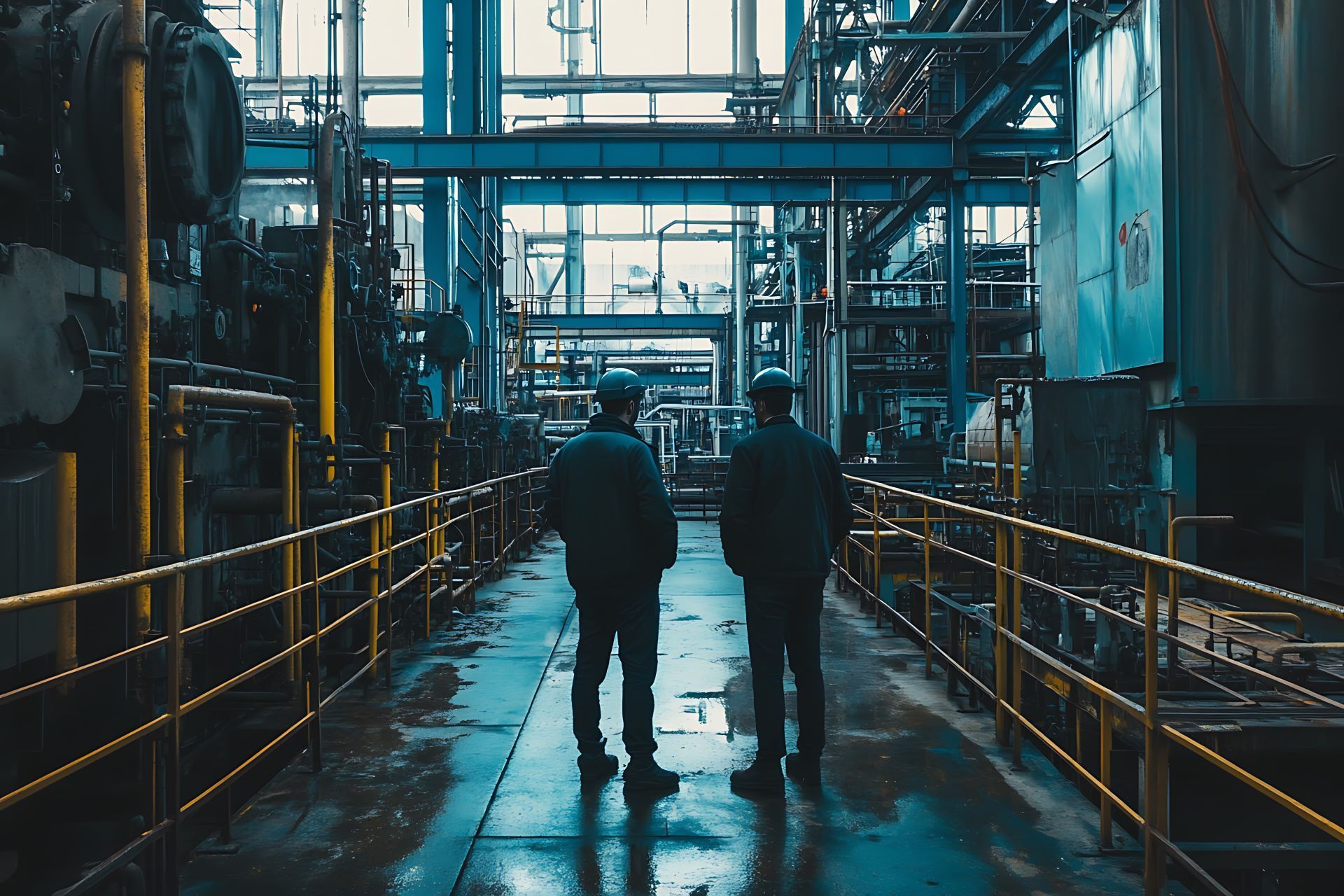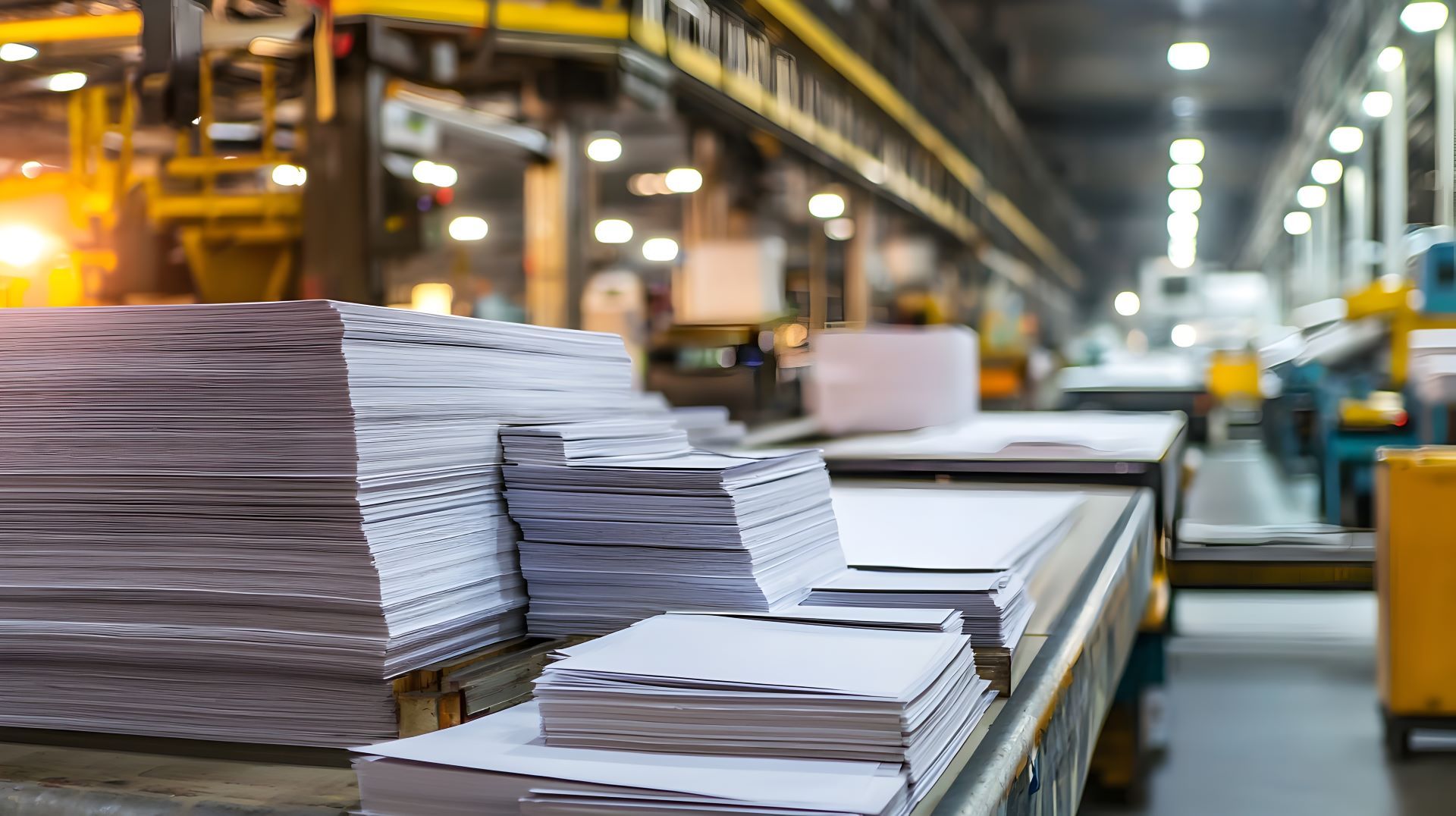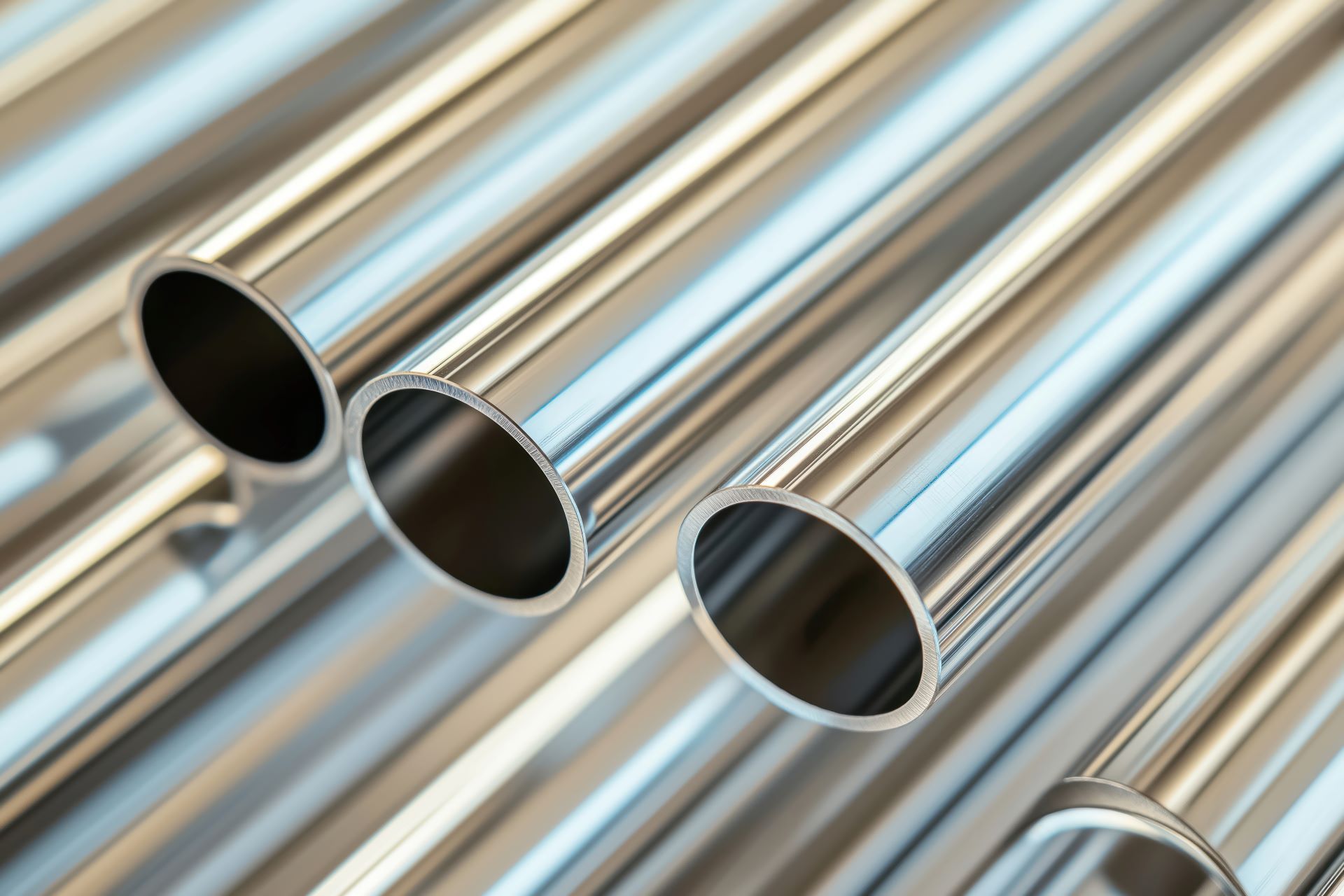Stainless Steel That’s Ready for Sanitary Precision
In sanitary environments, cleanliness is more than a requirement, it’s a regulatory necessity. From food and beverage production to pharmaceutical cleanrooms, surface finish plays a critical role in determining how effectively equipment can be cleaned, sterilized, and maintained. Electropolished stainless steel stands out as a top-performing finish in these applications due to its smooth, contaminant-resistant surface. For industries where hygiene, performance, and compliance are key, electropolished stainless offers measurable advantages.
At Action Stainless, we stock and process stainless steel products that meet stringent sanitary standards, including those requiring electropolished finishes. By offering in-house processing and quality control across our facilities, we ensure stainless steel materials are optimized for both function and finish especially for projects where sanitation is non-negotiable.
What Is Electropolishing?
Electropolishing is an electrochemical process that removes a thin layer of metal from the surface of stainless steel. Unlike mechanical polishing, which relies on abrasives, electropolishing dissolves microscopic peaks and contaminants using a controlled acidic bath and electrical current. The result is a highly smooth, clean, and uniform surface at a microscopic level.
Electropolishing can achieve a finish smoother than 20 microinches Ra, depending on the grade and processing conditions. This makes it especially suitable for piping systems, tanks, and components that require optimal flow and sterilization capabilities.
Why Surface Finish Matters in Sanitary Environments
In sanitary environments, even microscopic crevices can become breeding grounds for bacteria, product buildup, or cross-contamination. These risks can compromise both public health and regulatory compliance. That’s why surface finish is essential not just for appearance, but for hygiene, functionality, and cleanability.
Stainless steel’s corrosion resistance makes it a preferred material for food, beverage, and pharmaceutical systems. However, when untreated or mechanically finished, its surface may still harbor roughness that traps contaminants. Electropolishing solves this issue by enhancing surface smoothness while preserving the corrosion-resistant properties of stainless alloys.
How Electropolishing Enhances Stainless Steel Performance
Electropolishing delivers multiple technical advantages that directly impact sanitary performance, part longevity, and maintenance cycles. These benefits aren’t just theoretical, they translate into real-world reliability and reduced downtime.
| Performance Factor | Impact of Electropolishing |
|---|---|
| Surface Roughness | Reduces Ra values to smooth, mirror-like finishes that are easy to clean |
| Corrosion Resistance | Removes embedded impurities and enhances chromium-to-iron ratio on the surface |
| Contaminant Resistance | Minimizes surface defects where bacteria, food, or chemicals can adhere |
| Sterilization | Facilitates more effective cleaning in CIP/SIP systems and sterile environments |
| Part Durability | Reduces risk of stress risers and mechanical failure due to micro-defects |
| Aesthetic Finish | Delivers a uniform, reflective appearance for high-visibility applications |
Stainless Grades That Respond Well to Electropolishing
Not all stainless steel grades respond equally to electropolishing, and understanding which alloys perform best is key to selecting the right material for sanitary systems. At Action Stainless, we offer a wide range of stainless steel grades commonly used in electropolished sanitary applications.
304 / 304L
- Most common grade used for sanitary tubing and equipment
- Excellent electropolishing response and corrosion resistance
- Ideal for food, beverage, and basic pharma applications
316 / 316L
- Contains molybdenum for improved resistance to acids and chlorides
- Frequently used in biopharma, dairy, and clean-in-place systems
- Polishes well and retains a clean, corrosion-resistant finish
ASTM A270 and A269 Tubing
- Sanitary tubing standards often require or recommend electropolished internal surfaces
- These tubes are available in 304L or 316L, and we offer sourcing and processing assistance to match spec
Action Stainless offers all of the above grades with options for custom cutting, polishing prep, and logistics support for manufacturers requiring critical sanitary-grade stainless.
Applications That Benefit From Electropolished Stainless
Electropolished stainless steel is the preferred finish in many regulated industries where bacterial contamination or product retention could cause safety, quality, or compliance issues. These include:
- Food Processing Equipment: Tanks, filling lines, hoppers, and mixers that require frequent sterilization benefit from smoother surfaces that are easier to clean and less likely to trap food residue.
- Beverage & Brewing Systems: Electropolishing supports higher flow rates and lower contamination risk in beverage tubing, bottling, and filtration systems.
- Pharmaceutical & Biotech Processing: The strict sanitation demands in pharma require ultra-smooth surfaces for tanks, reactors, and transfer piping. Electropolished stainless ensures better cleaning efficiency and eliminates biofilm concerns.
- Dairy Systems: Milk and dairy products can leave bioresidue that leads to spoilage. Electropolished components prevent buildup and support safe product flow.
- Medical Manufacturing: In surgical and sterile environments, electropolished surfaces resist contamination and are easier to clean between uses or during sterilization cycles.
Comparing Electropolished vs. Mechanically Polished Stainless
| Attribute | Electropolished Stainless | Mechanically Polished Stainless |
|---|---|---|
| Surface Uniformity | Extremely consistent at microscopic level | May have micro-scratches or directionality |
| Cleanability | High - ideal for CIP/SIP cleaning systems | Moderate - may require more cleaning effort |
| Bacterial Resistance | Excellent | Moderate |
| Finish Appearance | Mirror-bright, uniform | Bright but may have polishing lines |
| Durability | Removes surface stress points | May introduce stress or burrs |
Why Manufacturers Choose Electropolished Stainless
For fabricators and OEMs building sanitary systems, the case for electropolishing goes beyond compliance, it simplifies cleaning, reduces maintenance costs, and extends the life of stainless steel components.
Clients choose electropolished stainless steel from Action Stainless for three key reasons:
- Reduced Risk of Contamination: The smooth surface minimizes the potential for microbial growth.
- Improved Product Yield: Cleaner surfaces reduce batch loss due to contamination or residue.
- Better Regulatory Confidence: Electropolished systems often meet 3-A, FDA, and EU hygiene standards with greater consistency.
Action Stainless: Supporting Sanitary Applications With In-House Solutions
Action Stainless provides more than just material, we offer in-stock inventory, cutting, polishing prep, and logistical support tailored for industries that rely on sanitary-grade stainless steel. Our facilities are equipped to prep your stainless order for electropolishing or final finishing as required by your project.
- Custom saw cutting and shearing to tight tolerances
- Stock availability in 304, 316, and other sanitary-grade alloys
- Material certifications and traceability upon request
- Nationwide distribution and support
We do not outsource cutting or material prep. Everything is handled in-house, giving you the speed and accuracy needed to meet production timelines.
Conclusion: Stainless Steel Is Built for Renewable Energy Demands
In sanitary manufacturing and processing, surface finish is critical to both performance and safety. Electropolished stainless steel delivers a finish that resists contamination, enhances cleanability, and meets the strict requirements of regulated industries.
From pharmaceutical tubing to dairy transfer lines, Action Stainless supports projects requiring sanitary-grade materials with fast, reliable service. Whether you're sourcing tubing, fittings, or custom-cut sheet and plate, we deliver the electropolishing-ready stainless products your application demands.






